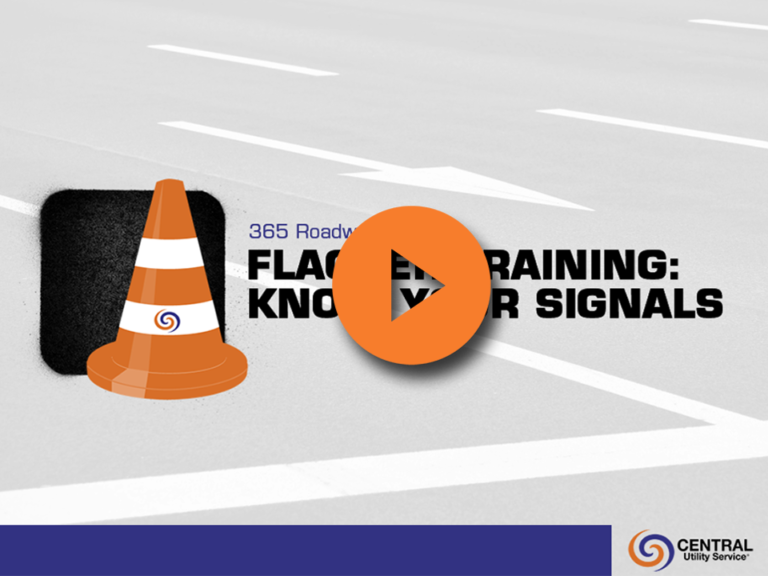
CENTRAL UTILITY SAFETY TRAINING
Traffic flagging is considered the most dangerous job in a roadway work zone, and Central Utility requires all on-the-ground personnel to complete extensive training in this area before any onsite work may be performed.
This elearning program is used as a first-step tool to illustrate and drill the three basic flagging signals. It gets the associate ready for more extensive instructor-led training.
THIS PROGRAM'S SPECIAL POWERS

Bilingual keywords
To ensure that the entire Central Utility roadway workforce can benefit from this program, keywords are offered in both English and Spanish.

Associative color
On-screen graphics associate with the easily-recognized colors of a standard traffic light, giving another memory hook for each flagging signal.

Multiple modalities
The flagging sequence is illustrated in several different ways--video, static illustration, and via quizzing--to allow varied opportunities for learning.

Scaffolded learning
To begin, material and interactions are presented in a predictable, sequenced approach. Later, the learner is challenged to think a little harder as unpredictability is introduced in the second drill set.
DEVELOPMENT NOTES
Challenges
Safety and process training programs require especially careful consideration of the tasks at hand and how they may be best illustrated. In addition, it’s critical that this type of training positively impacts every learner, not just those with strong reading and information-processing skills. In short, although the end product may appear simple, safety and process training is not for sissies!
Strategies
Roadway flagging signals are clear and easy to follow. They must, however, become second-nature for the flagger so that they can be employed in the hazardous and unpredictable context of an active roadway. To learn the signals requires practice and drill in safe-to-fail environments, where the consequences of mistakes are insignificant. As a first step in training, elearning offers a great opportunity for learning and skill-building.
Solution
This program provides a first step in training the flagging signals. It breaks down the signals in several different ways, then asks the viewer to reconstruct what they’ve just learned. The signals are presented in both illustrated and video form, and this is supported by consistent graphics and slide layouts. On-screen text is minimized so that learners of all literacy levels can fully benefit from the training.

